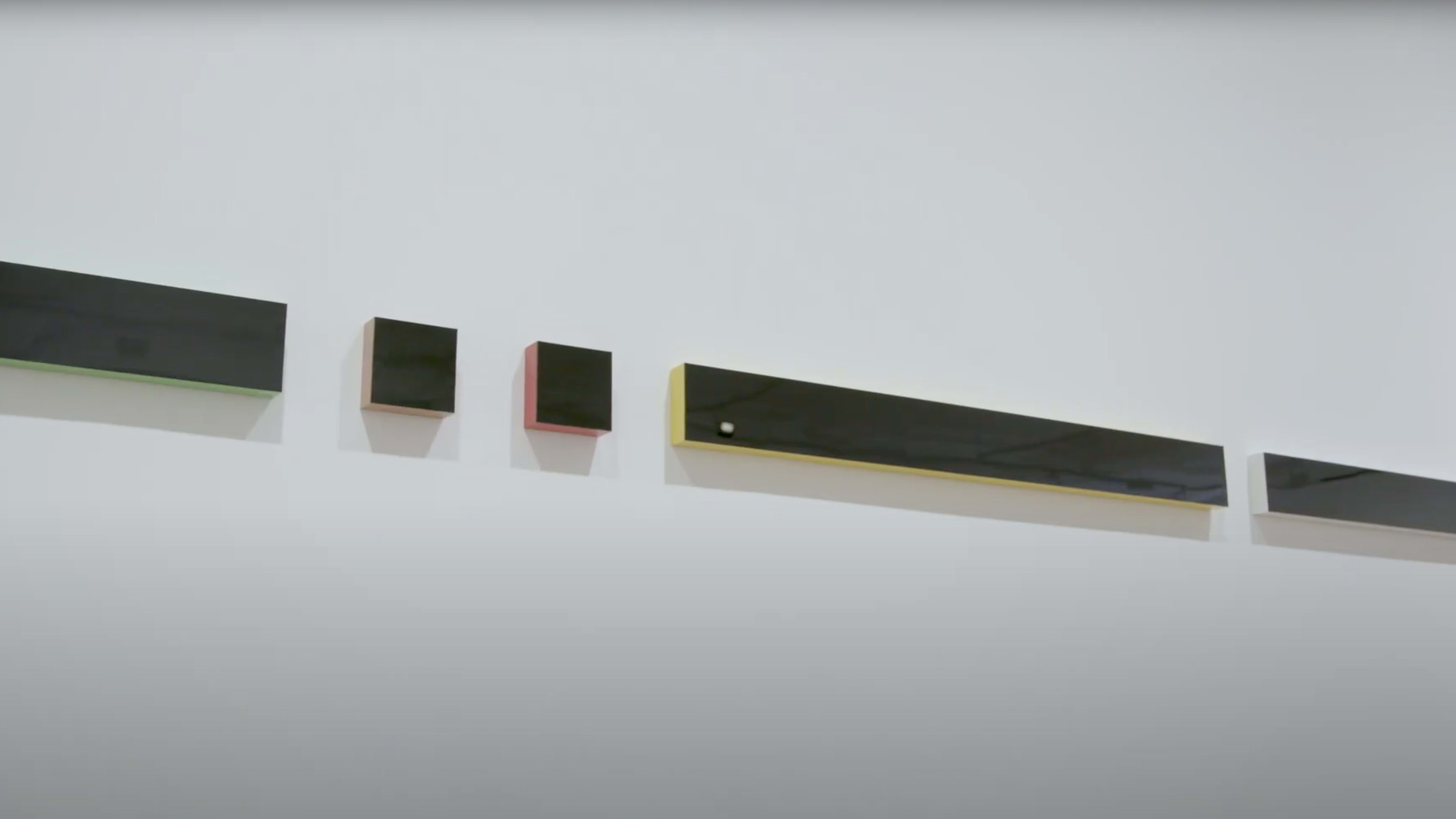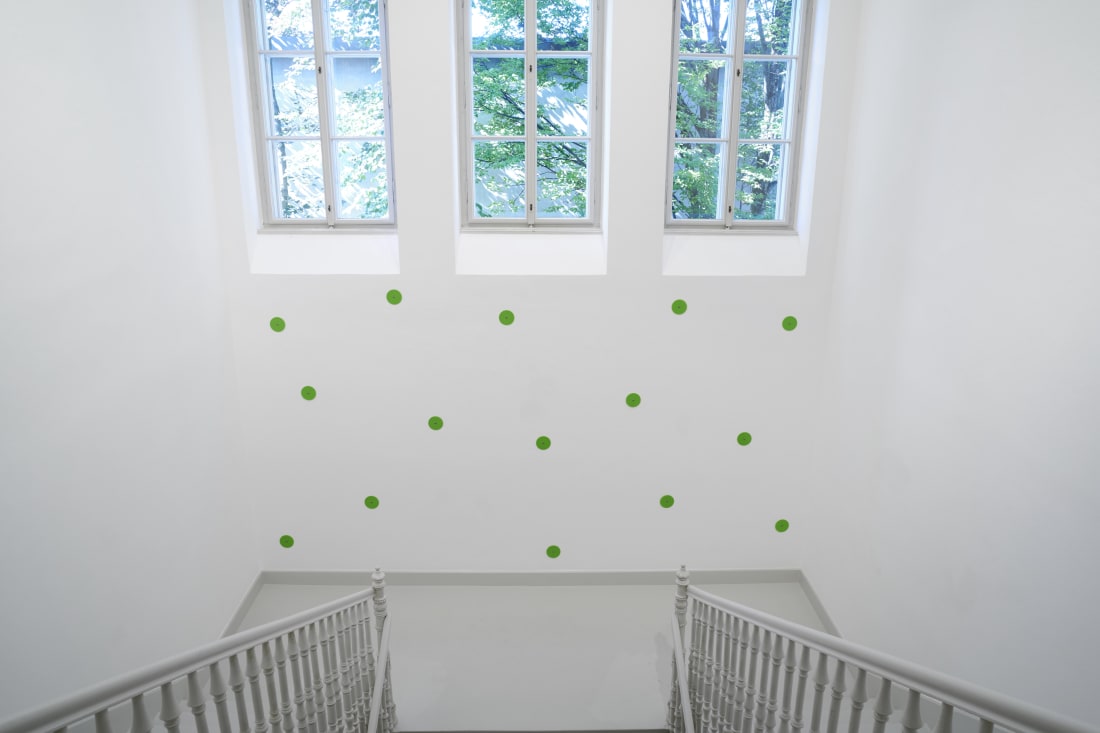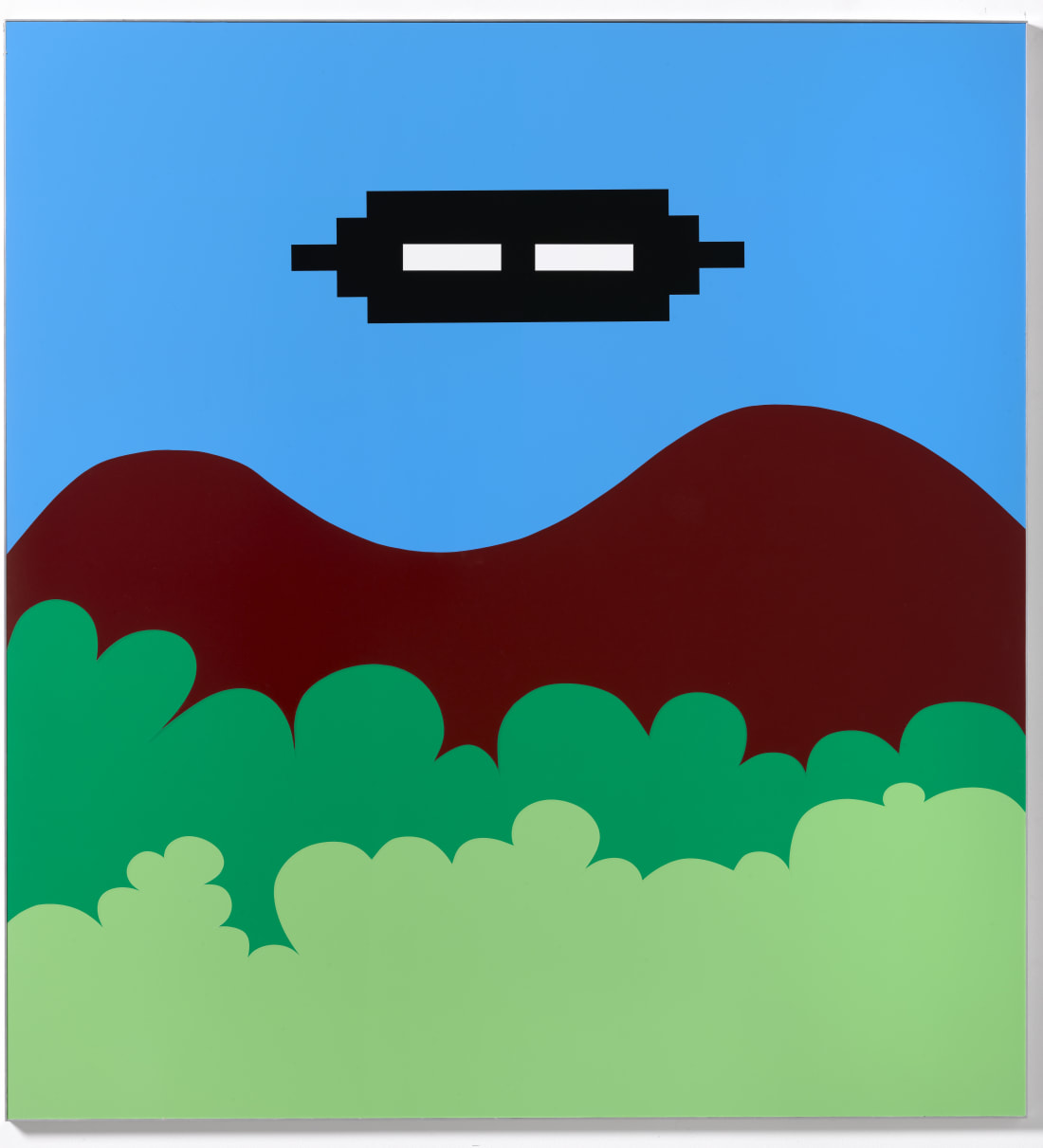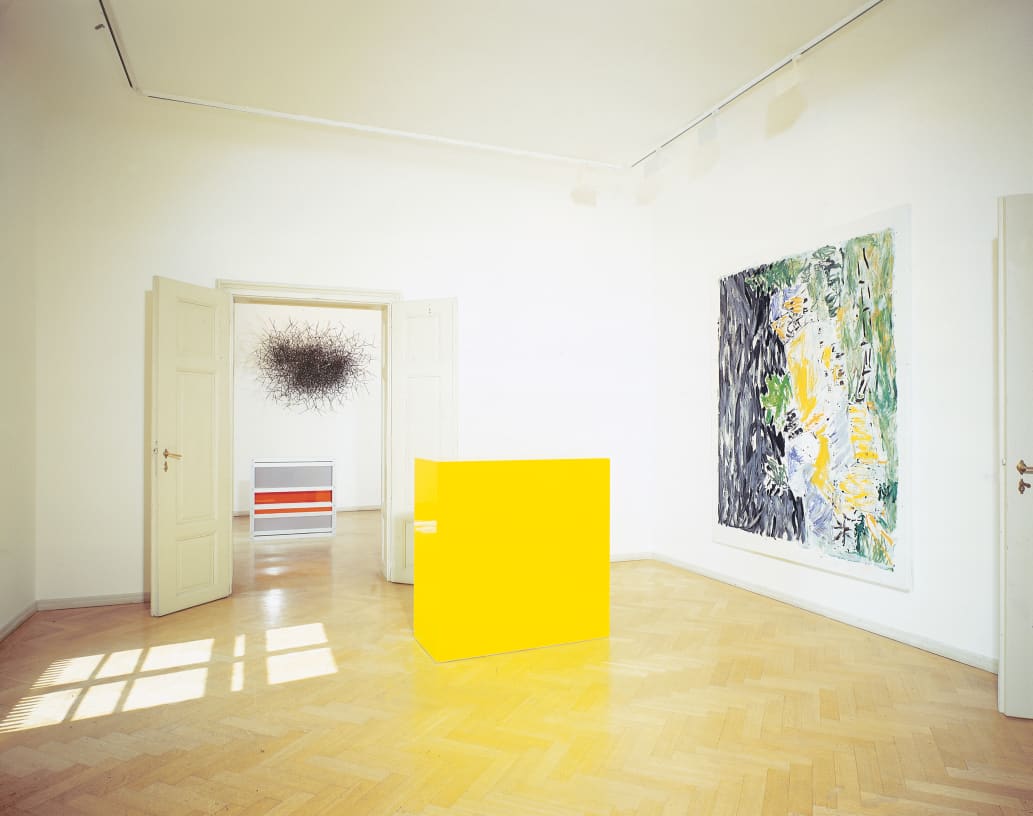

Gerwald Rockenschaub
Overview
'I use simple, clear forms or elements and strong colour contrasts as a means of catching viewers' attention, thus developing an interplay of visual meanings, associations, ruptures. In order to achieve the most incisive effect, I attempt to design my works so that they are as simple and precise as possible while also being complex.'
The work of the Austrian artist Gerwald Rockenschaub has been strongly associated with the Neo-Geo movement, begun in the early 1980s by a group of young artists who focused on the formal vocabulary of the abstract avant-garde. Neo-Geo permeated the aesthetics of American Minimalism with the consumerist symbols of Pop Art, although Rockenschaub's work cannot be categorised as any one of these styles. In his animations, foil pictures, objects and site-specific installations, he refers in equal measure to ideas and positions of modernism and, in an act of radical reduction and concentration, to the scaled-down symbols of Minimalism. He is influenced by the aesthetic system of the Bauhaus, Wassily Kandinsky’s abstract cosmos and the artistic concepts of Pop, with a particular focus on abstract codes and patterns from everyday life. His work disrupts pure Minimalism through interactions with its surroundings, while his use of Plexiglas surfaces incorporate the viewer's reflection.
The artist's Intarsia works, made of wood and acrylic glass, are based on a decorative technique that flourished during the Italian Renaissance, when pieces of wood veneer in different colours and shapes were applied to a flat surface to form a pattern. Similarly, his Reliefs are contemporary paraphrases of a historical technique; raised acrylic glass elements are applied to MDF surfaces to produce a concise variant of the traditional marble relief. Although he takes inspiration from classical techniques, Rockenschaub's practice is based on his advanced concept of production through his appropriation of modern technologies. He is one of the first artists to make use of a formal vocabulary that includes computer-generated graphics.
The work of the Austrian artist Gerwald Rockenschaub has been strongly associated with the Neo-Geo movement, begun in the early 1980s by a group of young artists who focused on the formal vocabulary of the abstract avant-garde. Neo-Geo permeated the aesthetics of American Minimalism with the consumerist symbols of Pop Art, although Rockenschaub's work cannot be categorised as any one of these styles. In his animations, foil pictures, objects and site-specific installations, he refers in equal measure to ideas and positions of modernism and, in an act of radical reduction and concentration, to the scaled-down symbols of Minimalism. He is influenced by the aesthetic system of the Bauhaus, Wassily Kandinsky’s abstract cosmos and the artistic concepts of Pop, with a particular focus on abstract codes and patterns from everyday life. His work disrupts pure Minimalism through interactions with its surroundings, while his use of Plexiglas surfaces incorporate the viewer's reflection.
The artist's Intarsia works, made of wood and acrylic glass, are based on a decorative technique that flourished during the Italian Renaissance, when pieces of wood veneer in different colours and shapes were applied to a flat surface to form a pattern. Similarly, his Reliefs are contemporary paraphrases of a historical technique; raised acrylic glass elements are applied to MDF surfaces to produce a concise variant of the traditional marble relief. Although he takes inspiration from classical techniques, Rockenschaub's practice is based on his advanced concept of production through his appropriation of modern technologies. He is one of the first artists to make use of a formal vocabulary that includes computer-generated graphics.
Based in Berlin, Rockenschaub became an internationally respected DJ in the 1990s and continues to compose electronic music. In 1993, together with Andrea Fraser and Christian Philipp Müller, he represented Austria at the 45th Venice Biennale. At documenta 12 in 2007, he presented a monumental fabric room installation. Important solo exhibitions of his work have been held at Sammlung Goetz, Munich (2017); Kunstmuseum St. Gallen, Switzerland (2016); Neuer Berliner Kunstverein, Berlin (2016); SCHAUWERK Sindelfingen (2014); Kunstmuseum Wolfsburg (2011) and Kunsthalle Bern (2008). In 2004, the Museum Moderner Kunst (mumok), Vienna, staged a major retrospective. Among the major international collections that house his work are the Belvedere Museum, Vienna; Brooklyn Museum, New York; Daimler Contemporary, Berlin; Galleria Civica d'Arte Moderna, Turin; Generali Foundation, Vienna; Haus Konstruktiv, Zürich; Kunstmuseum St. Gallen, Switzerland; mumok, Vienna; Museum Liaunig, Neuhaus, Austria; Sammlung Falckenberg, Hamburg; Sammlung Goetz, Munich; SCHAUWERK Sindelfingen; Staatsgalerie Stuttgart; and ZKM, Karlsruhe.
Videos




















































































































































































































